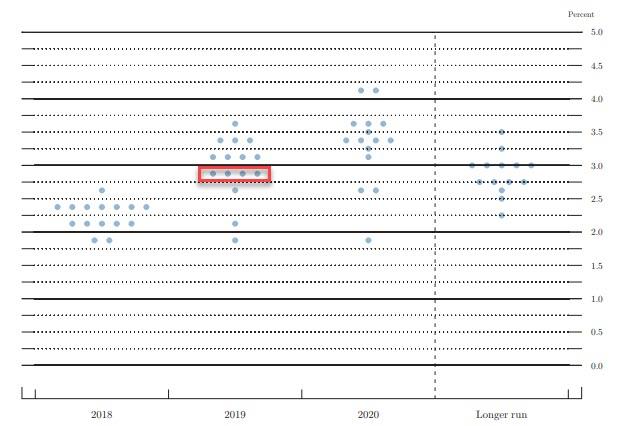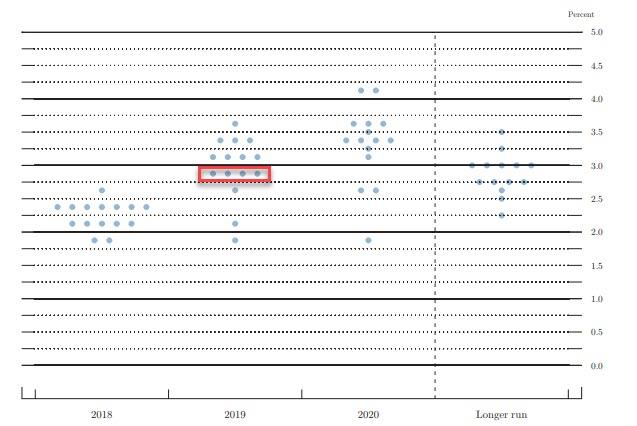On Wednesday at 2PM, the FOMC will publish its September rate decision and economic projections followed at 2:30PM ET by Chair Powell’s press conference. With a 25bps rate hike priced in, attention will be the on December 2018 meeting, as well as the 2019 “dots”, where the risk is that the median dot may fall given several new dovish participants making projections. This will also be the first FOMC forecast that includes 2021.

While there will hardly be any bombshells tomorrow, here’s what to expect, courtesy of RanSquawk:
RATES: The FOMC is expected to lift rates by 25bps to 2.00-2.25% at its September meeting, which would be the third rate rise in 2018, of the four rises forecast in its June dots. Money markets are pricing the hike with a very high degree of certainty, and prices two more rate hikes this year with around 80% certainty. In recent commentary, policymakers have generally said that they are comfortable with pursuing a gradual course of rate rises, and accordingly, Citi’s analysts say that the focus is on whether the FOMC will lift rates again in December, and if the Fed will push policy rates into “restrictive” territory (above around 3.0%) in 2019. (The Fed’s current rate forecast configuration is for four hikes in 2018, three hikes in 2019, and a single hike in 2020).
NEUTRAL RATES: The FOMC recent projections pencil in rates between 2.75-3.00% in the long-run. The range of policymaker estimates of the neutral rate is between 2.50-3.50%. The debate about what the Fed should do when it gets to neutral is gaining traction, with some participants looking for a pause-giving it time to evaluate the situation, while others suggested that lifting rates above neutral.
RISKS TO THE OUTLOOK: Officials seemed generally comfortable in the inflation outlook, with the likes of Powell, Brainard, and Williams seeing little signs of runaway inflation. Barclays notes that the August meeting minutes made 32 references to a “strong” economy, more references than any minutes in recent years. “Although downside risks appear to have risen, none of these seem to unduly occupy the Fed’s attention,” Barclays writes. “Some on the committee see upside risks from fiscal stimulus, while others have concerns that fiscal stimulus may fade quicker than expected. Protectionism, housing, oil prices, and an abrupt slowing in emerging market economies are also on the Fed’s radar as potential downside risks.” Accordingly, the bank believes that the FOMC will continue to categorize risks as “roughly balanced.”












Leave A Comment